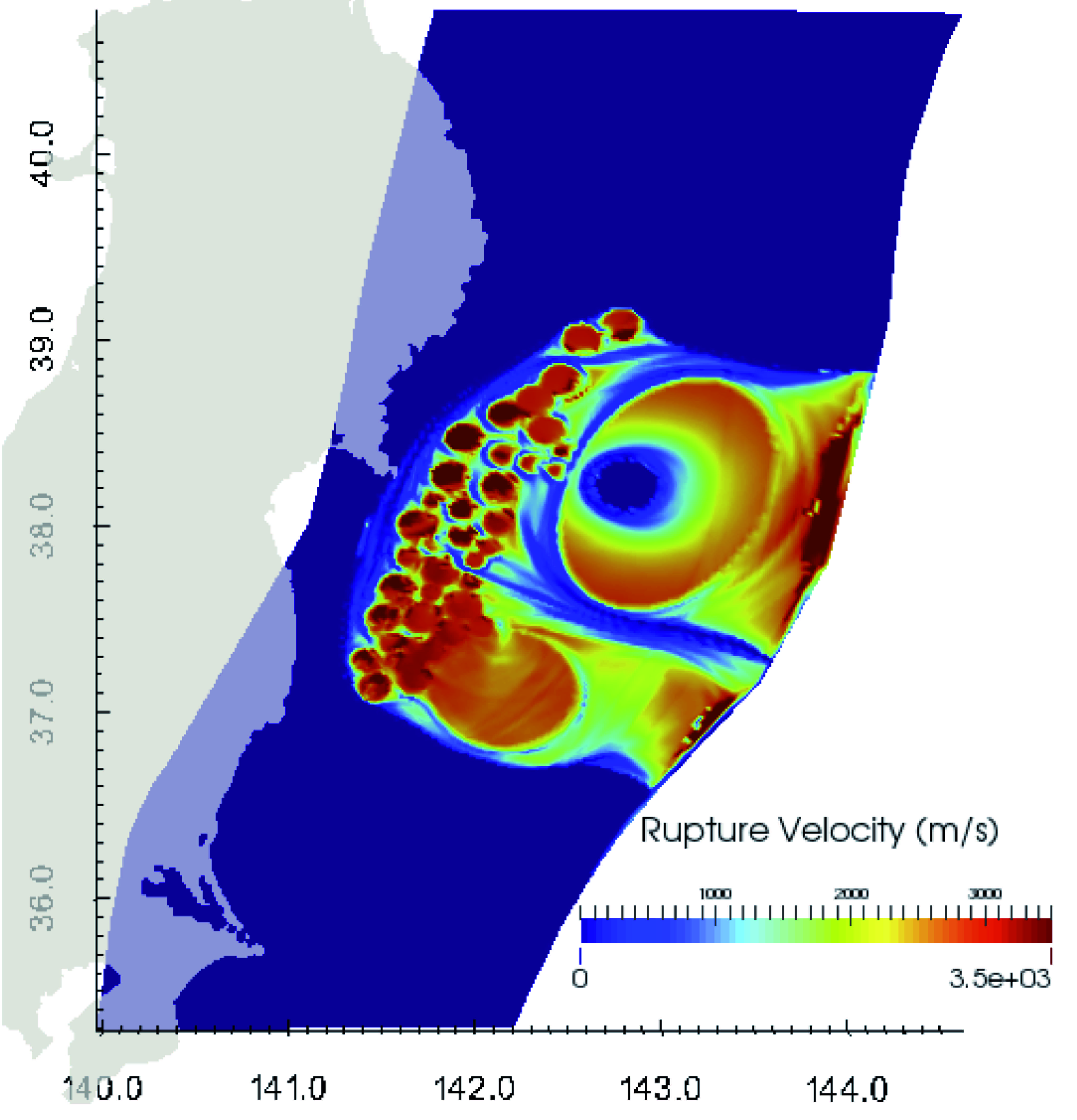An important goal of computational seismology is to simulate dynamic earthquake rupture and strong ground motion in realistic models that include crustal heterogeneities, non-linear rheologies and complex fault geometries. Increasing computational power is allowing scientists to resolve the small-scale processes through the use of numerical models at high resolution and large scales. Towards this goal, Galvez et al. (2014) incorporate dynamic rupture modeling capabilities in a spectral element solver on unstructured meshes, the 3-D open source code SPECFEM3D, and employ state-of-the-art software (CUBIT) for the generation of unstructured meshes of hexahedral elements. These tools provide high flexibility in representing fault systems with complex geometries, including faults with branches and non-planar faults. The domain size is extended with progressive mesh coarsening to maintain an accurate resolution of the static field. The implementation of dynamic rupture boundary conditions does not affect the parallel scalability of the code, enabling high-performance execution for large-scale dynamic rupture calculations. The accuracy of the implementation is verified by comparing the results to those of two finite element codes on benchmark problems including branched faults through the SCEC/USGS Dynamic Rupture Code Validation Project.
The tool is applied to develop a preliminary dynamic rupture model of the 2011 Mw 9.0 Tohoku earthquake that includes a non-planar plate interface with heterogeneous frictional properties and initial stresses. The final 3-D model consists of 2 km hexahedral mesh, 7,498,240 elements, with predetermined placements of asperities. The simulation used about 15,000 cpu hours at the Swiss National Supercomputer Center.
The rupture history produced by this model reproduces multiple rupture fronts. The up-dip front gradually accelerates and develops super-shear rupture speeds close to the trench, whereas the down-dip front propagates slowly below the hypocenter and migrates more rapidly towards the South. This model is in qualitative agreement with observation by other researches: high frequency radiation in the deep regions of the plate interface and low frequency radiation with large slip close to the trench. The team is now developing a refined dynamic rupture model that matches quantitatively the seismological and geodetic observations of the Tohoku earthquake. Overall, this tool offers a great potential to simulate more realistic earthquakes in complex faults systems.
Contributed by Percy Galvez
Galvez, P. and Ampuero, J.- P. and Dalguer, L. A. and Somala, S. N. and Nissen-Meyer, T. (2014) "Dynamic earthquake rupture modelled with an unstructured 3-D spectral element method applied to the 2011 M9 Tohoku earthquake", Geophysical Journal International Volume 198 (2) DOI: 10.1093/gji/ggu203

Distribution of rupture velocity in a dynamic rupture model of the Tohoku earthquake. Supershear emerges at the rupture near the trench.